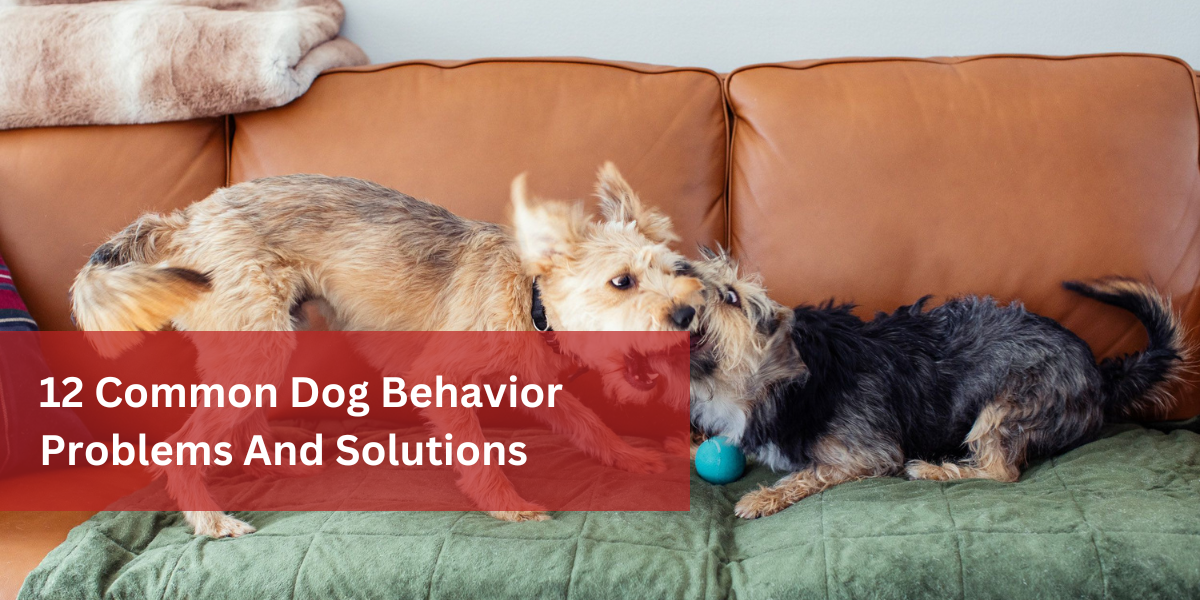Common Dog Behavior Problems And Solutions:- Dogs, like humans, can exhibit a range of behaviors that may challenge even the most patient pet parent. In this article, we’ll explore some of the most common dog behavior problems and provide practical, humane solutions to foster a harmonious relationship between you and your canine companion.
Understanding the Basics of Dog Behavior
Diving into the canine psyche, it’s crucial to comprehend the fundamental aspects of dog behavior. Dogs communicate through body language, vocalizations, and actions. Recognizing their cues is the first step in addressing and preventing behavior issues.
1: Excessive Barking
Dogs bark for various reasons, but incessant barking can become a headache for both you and your neighbors. Discover the root causes of excessive barking and explore effective strategies to curb this behavior without stifling your dog’s natural vocal instincts.
2: Aggression and Dominance
Aggression and dominance issues can be alarming for pet owners. Uncover the reasons behind aggressive behavior, whether it’s fear-based or territorial, and implement positive reinforcement techniques to foster a more balanced and controlled temperament.
3: Separation Anxiety
Many dogs suffer from separation anxiety, leading to destructive behavior when left alone. Learn how to recognize the signs of separation anxiety and explore practical solutions, from gradual desensitization to providing mental stimulation during your absence.
4: Digging and Chewing
Digging up the backyard or chewing through your favorite shoes can be frustrating. Explore the reasons behind these behaviors, from boredom to teething, and discover engaging activities and toys that redirect your dog’s energy in a positive way.
5: Jumping Up
While it’s heartwarming to be greeted by an excited dog, constant jumping can become a problem. Uncover the motivations behind this behavior and implement training techniques that encourage a more controlled and polite greeting.
6: Leash Pulling
Walking a dog that pulls incessantly on the leash can turn a leisurely stroll into a battle. Learn how to teach loose leash walking and turn your walks into an enjoyable experience for both you and your four-legged friend.
7: Inappropriate Elimination
Accidents happen, but consistent inappropriate elimination can be a sign of underlying issues. Identify potential causes, such as health concerns or lack of proper training, and implement effective potty training techniques.
8: Fear of Thunderstorms and Fireworks
Many dogs experience anxiety during thunderstorms and fireworks displays. Explore calming techniques, such as creating safe spaces and using anxiety wraps, to help your pup weather the storm with less stress.
9: Excessive Chasing
Whether it’s cars, bicycles, or wildlife, excessive chasing can pose risks to your dog’s safety. Discover the reasons behind this behavior and employ training methods to redirect their focus and ensure a safer environment.
10: Resource Guarding
Dogs may exhibit possessiveness over toys, food, or other resources. Explore positive reinforcement methods to address resource guarding and foster a more sharing-oriented attitude in your furry friend.
11: Counter Surfing
The allure of kitchen counters can be irresistible to some dogs. Learn how to discourage counter surfing behavior and create an environment that promotes positive habits in the heart of your home.
12: Unwanted Biting
While puppy biting is natural, persistent or aggressive biting can become a problem. Explore training techniques to teach bite inhibition and discourage unwanted biting behaviors in dogs of all ages.
Conclusion:
Addressing common dog behavior problems requires patience, understanding, and consistent training. By delving into the root causes and implementing positive reinforcement techniques, you can foster a stronger bond with your canine companion, creating a harmonious living environment for both of you.
FAQs:-
1. How long does it take to see improvements in a dog’s behavior with training?
Training results vary based on the dog’s age, breed, and the specific behavior being addressed. Consistency is key, and some behaviors may show improvement within a few weeks, while others may take longer.
2. Are professional trainers necessary to address behavior problems, or can I do it myself?
While professional trainers can be valuable, many behavior issues can be successfully addressed through consistent and positive training methods at home. Seek professional help if the problem persists or if safety concerns arise.
3. Can behavior problems be a sign of underlying health issues in dogs?
Yes, some behavior problems may be linked to health issues. It’s advisable to consult with a veterinarian if you notice sudden or drastic changes in your dog’s behavior to rule out any underlying medical concerns.
4. Is punishment an effective method for correcting dog behavior?
Positive reinforcement is generally more effective than punishment in modifying dog behavior. Punishment can create fear and anxiety, potentially worsening the behavior problem or causing new issues.
5. How can I prevent behavior problems in my new puppy?
Early socialization, consistent training, and providing mental and physical stimulation are crucial in preventing behavior problems in puppies. Start training and socialization early to build a strong foundation for a well-behaved adult dog.
